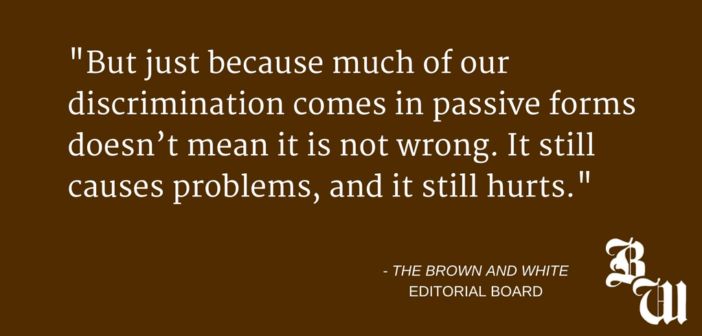It’s been hard to move on after the terrorist attack that took the life of a brave American and wounded seven others Sunday.
Confused about what “attack” you’re unaware of? It’s understandable.
But if you only imagined a bombing or a religiously motivated crime — one likely affiliated with ISIS — you’d be guilty of stereotyping. And though you might not be actively discriminating, at the very least you’d be flirting with that possibility.
In reality, it was just another shooting.
Just another shooting.
The normalization of such horrific crimes is disturbing, and it’s what contributes to the apathetic coverage this tragedy received. After all, it’s the media’s job to report on newsworthy events. And when eight other shootings happened in the same weekend, it’s no wonder it’s not considered a big deal.
However, there’s another possible reason this attack was hardly amplified by the media or even acknowledged by our country. It was a white man shooting a group that was all people of color, with one exception.
Pause. There are two kinds of people in this world: those who are antagonized by the notion that race is being brought into the picture and those who have comprehended the point and are ready to read further.
Which one are you? Take a mental note, we’ll revisit the topic later.
Now let’s break down the role race has played in other cases. There isn’t necessarily active racism going on, but we can pit two situations against each other and see how perceptions differed.
Situation one: Dylann Roof, Caucasian, age 21, shoots and kills nine African Americans at a South Carolina church. He cites distinct racial motives, but it’s argued his mental health is the cause for the attack, and it is not called terrorism.
Situation two: An African American student at Colgate University works on an art project using a hot glue gun. The campus goes on lockdown, believing there is an active shooter. There is no threat, of course, but it takes the university hours to realize it’s safe.
While these two tales are not polar opposites that need to be compared to isolate a variable, they each tell a story of treatment because of race. Colgate recognized the bias that went into the situation, and it triggered a protest on campus by concerned students.
One important distinction that needs to be made is that of intent. Internalizing biases is a process that can be passive, and it can rear its ugly head without any semblance of intent.
But just because much of our discrimination comes in passive forms doesn’t mean it is not wrong. It still causes problems, and it still hurts.
It’s particularly glaring when someone who usually doesn’t experience discrimination has to confront it all of a sudden. A previous opinion article in The Brown and White included the saga of a man who was operating on a joint email account with a woman and noticed a variance in treatment when it was signed by his name versus hers.
Going back to the aforementioned question, if you were irked by the introduction of race into the picture, ask yourself if anything has changed since you were exposed to the example in this piece.
Hopefully the answer is yes. In fact, it’s imperative for the answer to be yes because that’s how change is driven. Be a part of it.






Comment policy
Comments posted to The Brown and White website are reviewed by a moderator before being approved. Incendiary speech or harassing language, including comments targeted at individuals, may be deemed unacceptable and not published. Spam and other soliciting will also be declined.
The Brown and White also reserves the right to not publish entirely anonymous comments.
1 Comment
“It’s been hard to move on after the terrorist attack that took the life of a brave American and wounded seven others Sunday. … The normalization of such horrific crimes is disturbing, and it’s what contributes to the apathetic coverage this tragedy received. After all, it’s the media’s job to report on newsworthy events. And when eight other shootings happened in the same weekend, it’s no wonder it’s not considered a big deal.”
In attached reference there are 10 weekend incidents (11 if you count friday night as part of the weekend) none of which seem to match “a brave American and … seven others”. I’m confused.
Dylann Roof not a terrorist? I don’t care what you technically call him. What he did was evil. Lawyers are legally required to defend him and insanity is probably the only defense available. I will say I think everyone is insane to some degree. This being said, I wish the punishment would fit the crime of killing nine caring human beings. It won’t.
“Going back to the aforementioned question, if you were irked by the introduction of race into the picture, ask yourself if anything has changed since you were exposed to the example in this piece.” Which example? I’m confused.